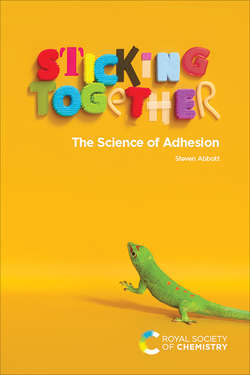Читать книгу Sticking Together - Steven Abbott - Страница 30
На сайте Литреса книга снята с продажи.
3.4 USE SPARINGLY
ОглавлениеIt always used to surprise me that tubes of household glue instructed us to use a thin layer. If the glue is doing the sticking, surely more is better. Logic then stepped in. Any manufacturer wants the user to use as much as possible. If they are saying “use sparingly” they must have a very good reason.
In turns out that there are two reasons. One reason must await another chapter. The second is simple: most of these adhesives are rather useless polymers. This is not an attempt to insult the adhesive makers. Adhesion is a property of the system and the overriding priority is to find an adhesive formulation that is sufficiently liquid in the tube, with a sufficiently long shelf life before going solid in the tube, and with a sufficiently fast drying or solidifying time – along with desirable properties in terms of health, safety, price, odour etc. when in use. The end result is that (excluding crosslinked systems such as epoxies, urethanes, urea/formaldehydes etc.) the polymers are nowhere near as strong as apparently simple polymers such as PE or PET, and even less strong than the ceramic of a cup. Yet they are able to do their job if applied properly, because adhesion isn't just about strength.
This weakness of the adhesive means that if you have a thick layer in the joint, failure might be within the adhesive itself – this is called “cohesive failure” (compared to “adhesive failure” when the adhesion fails (Figure 3.7)) and is deeply unpopular with users; they don't like it when it is obvious that the adhesive itself wasn't up to the job. When the layer is as thin as possible, then the strength of the polymer itself is less relevant and/or less obvious when a failure is observed.
Figure 3.7 The difference between adhesive failure (at the interface) and cohesive failure (within the adhesive).
In Chapter 5 I will describe a special adhesive polymer which is one of the most useless polymers on the planet with very few desirable properties. If you include 100 nm of this polymer in a special type of joint, the adhesion is very poor – the joint fails by cohesive failure within this useless polymer. If, instead, you include a 20–50 nm layer then, as I once spent a few challenging months proving, the joint is almost indestructible.
